#or Model Book of Calligraphy
Text

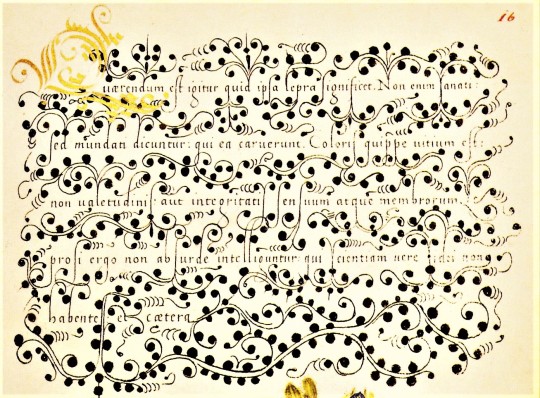

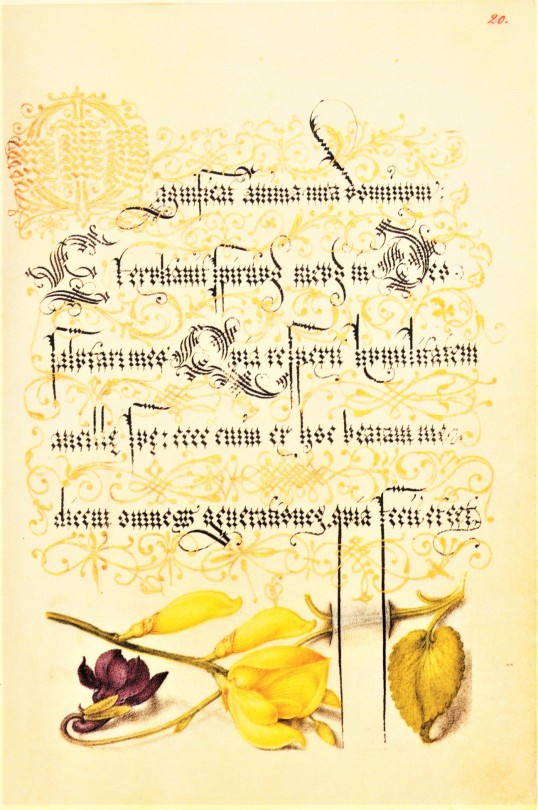









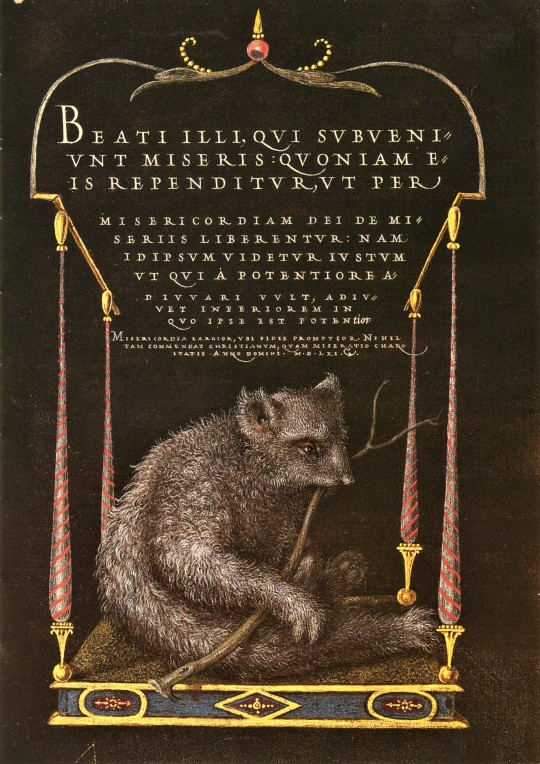
Typography Tuesday
We return to our facsimile of a 16th-cnetury calligraphic manuscript, Mira Calligraphiae Monumenta, or Model Book of Calligraphy, written in 1561/62 by Georg Bocskay, the Croatian-born court secretary to the Holy Roman Emperor Ferdinand I, and illuminated 30 years later by Flemish painter Joris Hoefnagel for the grandson of Ferdinand I, Emperor Rudolph II. The manuscript was produced by Bocskay in Vienna to demonstrate his technical mastery of the immense range of writing styles known to him. To complement and augment Bocskay's calligraphy, Hoefnagel added fruit, flowers, and insects to nearly every page, composing them so as to enhance the unity and balance of the page’s design. Although the two never met, the manuscript has an uncanny quality of collaboration about it.
Our facsimile was the first facsimile produced from the collection at the J. Paul Getty Museum in Los Angeles. It was printed in Lausanne, Switzerland by Imprimeries Reunies and published by Christopher Hudson in 1992.
View another post from Mira Calligraphiae Monumenta,
View more Typography Tuesday posts.
#Typography Tuesday#typetuesday#Mira Calligraphiae Monumenta#or Model Book of Calligraphy#Georg Bocskay#Joris Hoefnagel#illuminated manuscripts#manuscripts#manuscript facsimiles#facsimiles#calligraphy#letter forms#letters#J. Paul Getty Museum#Imprimeries Reunies#Christopher Hudson#Ferdinand I#Rudolph II
827 notes
·
View notes
Text
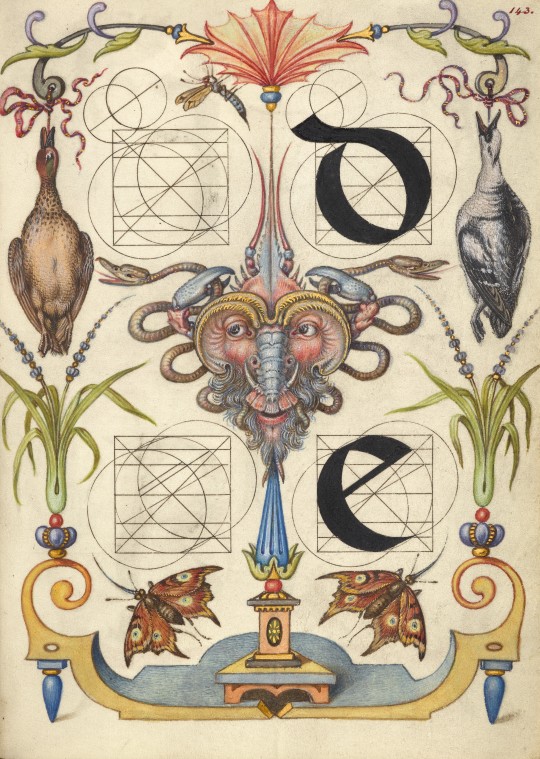
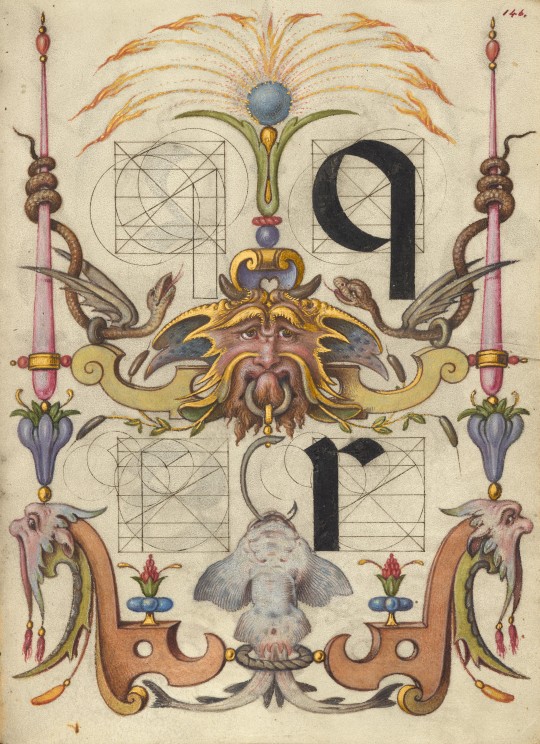
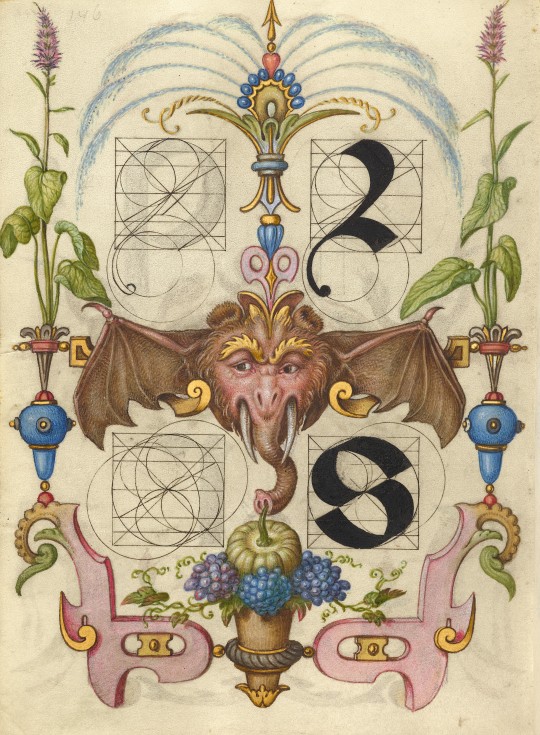

"guide to the construction of letters"
pages from the "model book of calligraphy", vienna, originally created by georg bocskay from 1561-62, illuminated and expanded by joris hoefnagel, c. 1591–96
source: Getty Museum Collection, Ms. 20 (86.MV.527), fol. 143r-147r
#16th century#joris hoefnagel#mira calligraphiae monumenta#model book of calligraphy#guide to the construction of letters#georg bocskay#calligraphy#geometry#diagrams#hybrids#grotesques#illuminated manuscript
735 notes
·
View notes
Text
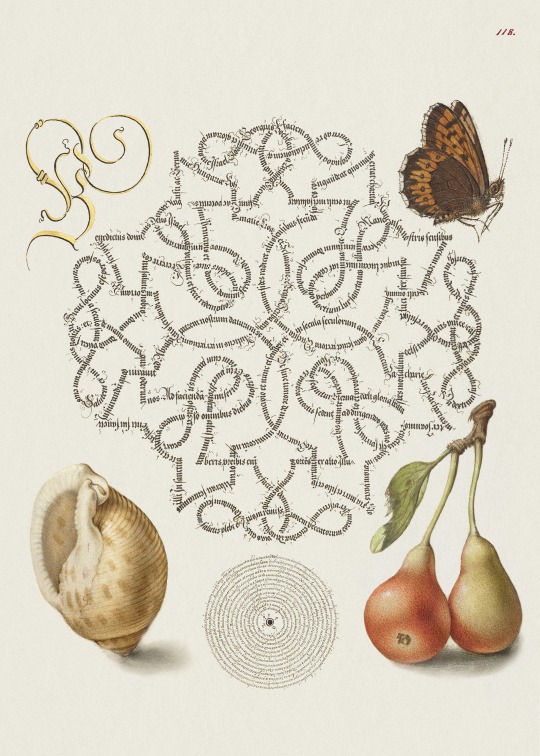


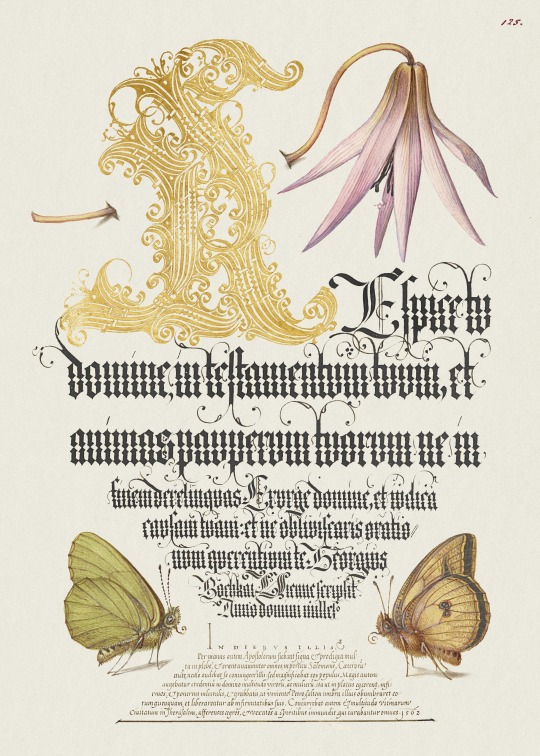



Mira Calligraphiae Monumenta: A 16th Century Calligraphic Manuscript Inscribed by Georg Bocskay & Illustrated by Joris Hoefnagel
Georg Bocskay, a master calligrapher & imperial secretary to the Holy Roman Emperor Ferdinand I, created Mira calligraphiae monumenta (Model Book of Calligraphy) as an exhibition piece. He assembled a vast selection of contemporary & historic scripts. Many of these selections were not intended for use, but for display. The manuscript demonstrated Bocskay's fine tuned calligraphy skills. Georg passed away in 1575, shortly after this book was written.
Around 30 years later, Emperor Rudolph II commissioned Europe's last great manuscript illuminator, Joris Hoefnagel, to embellish Bocskay's manuscript. In an attempt to out-do Georg's exemplary calligraphy work, Joris used every color, resource of illusionism, & form to devise brilliant grotesques - from flowers, fruits, insects, & animals to monsters & masks.
The end result is an incredible & unique collection of art & penmanship - "a landmark in the cultural debate between word & image."
#Georg bocskay#joris hoefnagel#calligraphy#mira calligraphiae monumenta#16 century art#16th century#model book of calligraphy
7 notes
·
View notes
Text

Dianthus and Almond
from The Model Book of Calligraphy to Holy Roman Emperor Rudolf II, 1590s
Joris Hoefnagel (1542-1600, Flemish / Hungarian)
#dianthus#carnation#calligraphy#joris hoefnagel#almond#The Model Book of Calligraphy#16th century art#ancient book
4 notes
·
View notes
Note
About that Naruto is Uchiha catnip and probably fucked 75% of the Uchiha clan thing... What job did he ultimately become ultra successful in? Or does he have multiple jobs he is ultra successful in? Like he took an acting job as an extra and then got noticed and started getting better roles, initially got typecast in sunny, optimistic, happy-go-lucky characters, then had a breakout role with a villainous character and his acting was so good it made everyone shit their pants, thus getting rid of the typecasting problem, and launching an exceptional acting career with a diverse and memorable portfolio of characters and a fuckload of awards. He does modelling and dancing, and as fans have noticed, has amazing handwriting and started showing off his calligraphy skills on his profile time to time as well. Has a preference for traditional clothes with a modern twist so his style is pretty distinct and he is known for his iconic kimono-suit fusions. He's like Snoop Dogg.... Appearing everywhere and doing everything including a channel where he takes care of his extensive greenhouse and a series of children's books with the Nine Bijuu collaboration with other notable personalities being the most well known. The books were so popular that these nine, including SandCo heir Gaara, Rapper Kirabi etc actually wrote a nine part novel series with each one writing a single book in the series and the last one, the Juubi being a combined effort. Basically Naruto was always overshadowed by his brilliant family but when he struck out on his own even he couldn't have predicted how extremely successful he would end up being. So the so called Black sheep to the family was a Red Fox in disguise.
Oh i am putting this in the tag because this is great and I could totally see it fitting into things
223 notes
·
View notes
Photo

"Caterpillar, Pear, Tulip, and Purple Snail " (1561–96) — from the remarkable Model Book of Calligraphy, the result of a collaboration across many decades between a master scribe Georg Bocskay and artist Joris Hoefnagel, who died #onthisday in 1601: https://publicdomainreview.org/collection/the-model-book-of-calligraphy-1561-1596 #OTD
118 notes
·
View notes
Text
Jujutsu Kaisen characters and things/feelings they remind me of, Let's gO
YUUJI ITADORI
Collecting beetles, Fishing trips, sound of crickets in the summer, the feeling when classes are cancelled in the afternoon, grandparents' unconditional love, Planning trips with childhood friends, Helping out at local orphanages, orange flavored sour candy, waking up to see you have an hour till the alarm goes off, complimenting random people, blowing bubbles in the backyard, smiles that convey more than words. Beach Weather songs.

MEGUMI FUSHIGURO
Collecting seashells on the beach, aquarium visits, white and beige clothing, sunny skies and cool breeze, newspapers, broken phone screens and brand new headphones, forests, polished dress shoes, notes from sister, a hanky your mom made for you, a spare pair of round sunglasses you find under your childhood bed, blue lemonade, lifelong friendships, unwavering loyalty, moral compass. Conan Grey songs.

NOBARA KUGISAKI
Retro futuristic scene in modern Tokyo, lipstick on baseball jersey, Unplanned trips to Sephor and Ulta, a thousand pairs of clip on piercings, naval tattooes, chunky sneakers, acing tests to prove sexist teachers wrong, bathtub covered in hair dye, love letters to senpai, wired earphones, time capsule buried 10 years ago, first snow of the year, tumblr addiction, dad's rusty toolbox, random rips in clothes, finding money in pant pockets. Meghan Trainor songs.

SATORU GOJO
Being the relatives' favorite kid, pats on the head, well ironed shirts that wrinkle in an hour, karaoke booths, digimon figurines, blue led lights, early morning breeze, raindrops on glass, cloud-gazing, spa days, model united nations brat, your soulmate being your bestfriend, loneliness, dining in restaurants alone, train trips, broken promises, the pressure of being at the top. Periwinkle flowers. Baseball dates. Panic at the disco playlists.
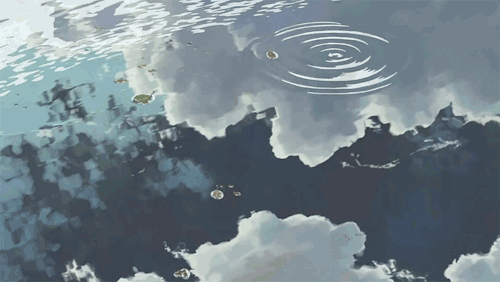
MAKI ZENIN
Long eyelashes dusting your cheeks, Heels that push you over 6 feet, biker gang, Worn out karate uniforms, cracked glasses, scalp itchy from hair ties, cocoa butter lip balms, prioritizing one's ambitions, your parents never acknowledging you, minty deodrant and mouthwash, sour relations, gritting teeth, shoulders straight, skorts, dewy makeup, dead of fall, surprise birthday parties, Ava Max music.
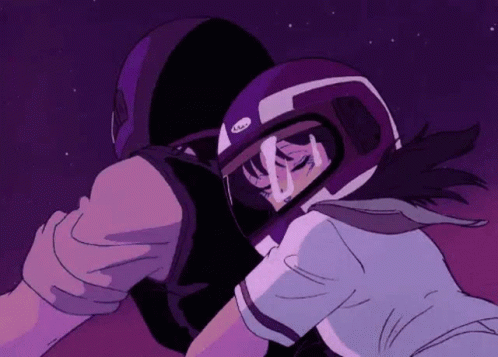
YUTA OKKOTSU
Black and white wardrobe, manga addiction, gummy vitamins, straight A student, movie theatres after the crowd leaves, someone's watching me, self help book, under eye cream, calligraphy, kyoto visits, forehead kisses, everything's going to be fine, first friendship, traffic signals, overcast skies, stargazing, promise rings, last days of winter, Billie eilish music.
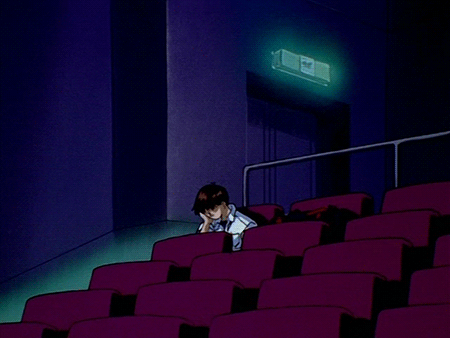
#gojo fluff#gojo smut#jjk fanart#itadori#jujutsu kaisen#megumi#geto suguru#gojo satoru#jjk#nobara fluff#maki zenin#yuta okkotsu#jjk fanfic#jjk drabble#jjk imagine#anime fluff#fushiguro#sukuna#thirst
97 notes
·
View notes
Text
Greetings and Life Update
I really miss being on here and talking to you all! I hope everyone on Witchblr is doing well and enjoying the season.
I want to say that I have been undergoing a bit of a career change and that's why I haven't been on here as much. I have transitioned from being a librarian to...dun dun dun...a historical archivist! In February, I accepted a new position at SCV Historical Society. When I was in grad school I had no idea that museum archival work was even in the cards for me. It's crazy how much can change in just a year. This was emotionally difficult for me because I was so attached to the library and the work I was doing there. The commute, however, was slowly killing me and I didn't feel like I was being challenged. I took the new job because my intuition was firmly telling me it was the right thing to do, but it was not an easy decision.
Now that I am (more or less) adjusted to the new position and sleep schedule, I'm excited to be more active on here because everything witchcraft makes me feel at home. I'd also like to give a quick update on where I'm at on my path:
As with a lot of secular witches, I had a phase of reading about Chaos Magick and finding ways to adapt this model to my own life and practice. The idea of creating servitors and working with archetypal deities really resonated with me. I'm now reading a book called Why Woo-Woo Works: The Surprising Science Behind Meditation, Reiki, Crystals, and Other Alternative Practices by David R. Hamilton Ph.D. It really helps solidify for the reader why all religions/spiritual practices tend to work for people (at least some extent). The book pairs well with Chaos Magick and witchcraft in general because the author highlights the importance of belief in achieving your goals, getting results, living a better life, etc. He also cites a startling amount of scientific studies and lists them in the references at the end of the book (for skeptics like me that want to be sure that the author isn't stretching the truth or taking any liberties with explaining the results of the experiments).
Next--over the winter holiday, I was gifted a shitload of calligraphy supplies for some reason. So I've started to get into calligraphy and various ink colors and pens. Naturally this calligraphy hobby really has me obsessed with color magic and ink magic (I still don't know if ink magic is a thing, but it should be).
Between work and all the craziness of life, I've also been steadily working on a master list of personal correspondences. I started on paper, but soon transitioned over to a digital list because it really is a living, iterative document that can change from day-to-day. For this I've been using the whiteboard feature on Canva, and I've also been working on some other stuff on there that really deserves its own post.
I also have way too many witchcraft books to read; it's really intimidating at this point. If you have any tips on how to set up a reading schedule or reading priority list, let me know. Actually if you have any advice on how to keep up a reading habit while also keeping up with everything else, please please please throw it my way.
I've got so much to say! I could go on and on. It's good to be back.
#paganism#witchcraft#witch#just witchy things#neopaganism#pagan#witches of tumblr#secular witchcraft#nature#witchblr#magick#secular witch#secular magick#nature worship#atheopaganism#naturalistic paganism#sass witch#sass witchcraft#women writers#writeblr#spiritual
15 notes
·
View notes
Text
List of hobbies and interests for your OCs!
1. Fencing
2. Woodworking/carpentry
3. Stone carving
4. Candle making
5. Leather crafting
6. Horse riding
7. Metalworking
8. Archery
9. Herbalism
10. Doll making
11. Sewing
12. Embroidery
13. Sweet making
14. Painting
15. Drawing
16. Jewellery making
17. Mixology (cocktail making)
18. Blogging/vlogging
19. Soap making
20. Whittling/woodcarving
21. Poetry
22. Story writing
23. Article writing
24. Puzzles
25. Astronomy/stargazing
26. Programming
27. Hacking
28. Going on walks in nature
29. Cycling
30. Watching documentaries
31. Graphic design
32. Video games
33. Digital art
34. Singing
35. Making digital music
36. Artificial intelligence
37. Pottery
38. Witchcraft
39. Fashion design
40. Make-up/face painting
41. Cosplay
42. Surfing
43. Sailing
44. Skiing
45. Snowboarding
46. Running
47. Hiking
48. Board games
49. Dancing
50. Interior design
51. Gymnastics
52. Martial arts
53. Bodybuilding
54. Activism
55. Public speaking
56. Debating
57. Team sports
58. Playing a musical instrument
59. Kayaking or canoeing
60. Boxing or kickboxing
61. Travelling
62. Fishing
63. Cooking
64. Baking
65. Yoga
66. Bird watching
67. Collecting something (e.g. books, figurines, stuffed toys, souvenirs)
68. Gardening
69. Scrapbooking
70. Listening to music
71. Analysing books/poetry/song lyrics
72. Personality typing (e.g. MBTI, enneagram)
73. Learning new languages
74. Photography
75. Watching TV
76. Musical theatre
77. Golfing
78. Bowling
79. Bingo
80. Reading
81. Latte art
82. Learning magic tricks
83. Puppetry
84. Chess
85. Juggling
86. Stand-up comedy
87. Pranking others
88. Nail painting
89. Graffiti
90. Calligraphy
91. Beekeeping
92. Camping
93. Crossword puzzles
94. Parkour
95. Roller skating
96. Vehicle restoration
97. Listening to podcasts
98. Ice skating
99. Volunteering
100. Pole dancing
101. Writing book or film reviews
102. Bullet journalling
103. Picking flowers
104. Going on picnics
105. Sudoku
106. Animation
107. Making playlists
108. Selling things they’ve created
109. Playing roleplay games
110. Modelling
111. Hair styling
112. Finding and collecting seashells
113. Tattooing
114. Cake decorating
107 notes
·
View notes
Photo

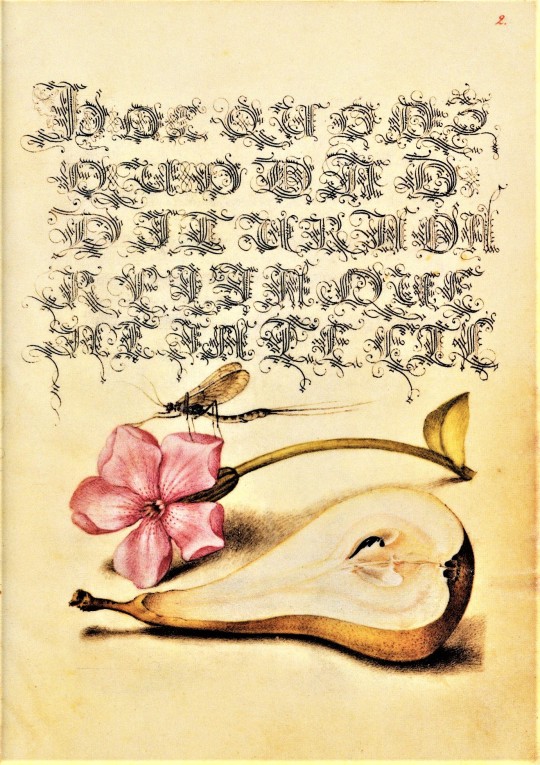
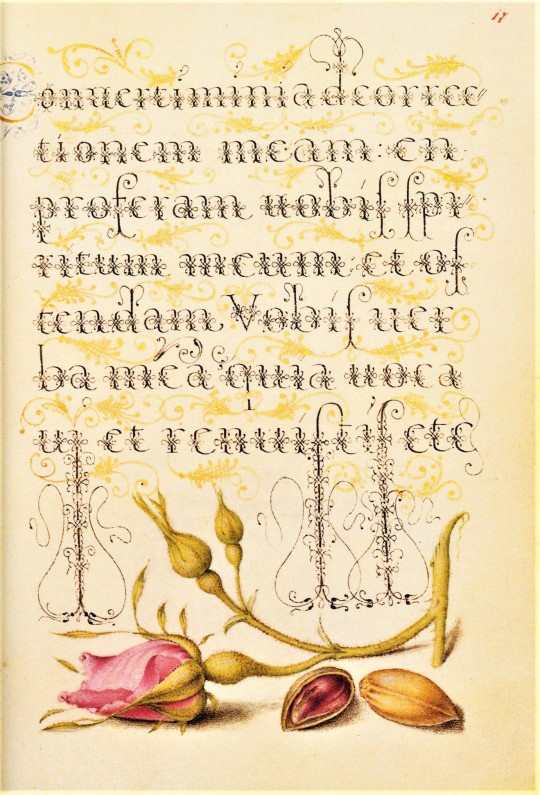




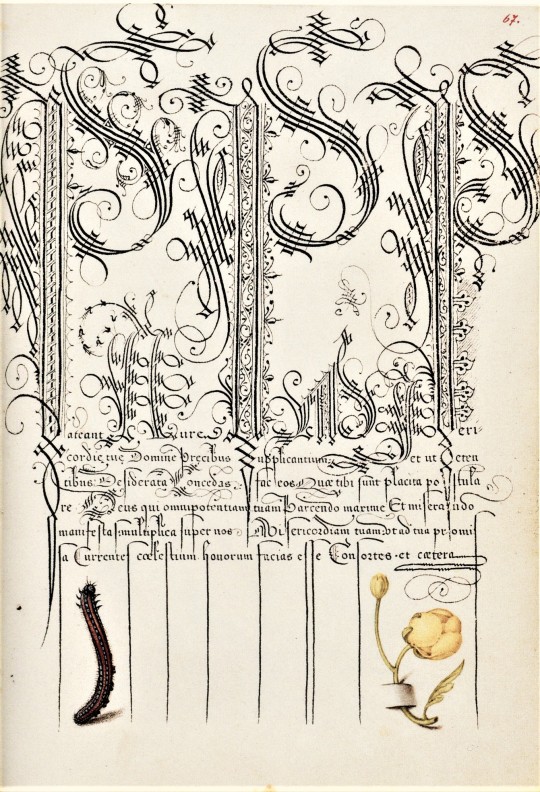


Typography Tuesday
Sometimes, things in our collection still surprise me, even after 29 years. From our fairly sizable manuscript facsimile collection, I was surprised I had never encountered this little (5 X 7 in.) reproduction of a 16th-cnetury calligraphic manuscript, Mira Calligraphiae Monumenta, the first facsimile produced from the collection at the J. Paul Getty Museum in Los Angeles, printed in Lausanne, Switzerland by Imprimeries Reunies and published by Christopher Hudson in 1992.
As the relatively new invention of printing came to dominate the production of books by the 1500s, the calligraphic inventiveness of scribes became prized for their aesthetic qualities rather than their production value.
From 1561 to 1562, Georg Bocskay, the Croatian-born court secretary to the Holy Roman Emperor Ferdinand I, created this Model Book of Calligraphy in Vienna to demonstrate his technical mastery of the immense range of writing styles known to him. About thirty years later, Emperor Rudolph II, Ferdinand's grandson, commissioned the [Flemish painter] Joris Hoefnagel to illuminate Bocskay's model book. Hoefnagel added fruit, flowers, and insects to nearly every page, composing them so as to enhance the unity and balance of the page's design. -- Getty Museum Collection webpage.
Although the two never met, the manuscript has an uncanny quality of collaboration about it.
Today we only show 11 pages from the facsimile, but we hope to present more from this highly-inventive manuscript of calligraphic virtuosity in the future.

View more Typography Tuesday posts.
-- MAX, Head, Special Collections
#Typography Tuesday#typetuesday#Typography Tuesday#Mira Calligraphiae Monumenta#Georg Bocskay#Joris Hoefnagel#calligraphy#letter forms#letters#J. Paul Getty Museum#Imprimeries Reunies#Christopher Hudson#illuminated manuscripts#facsimiles#manuscript facsimiles#Ferdinand I#Rudolph II
125 notes
·
View notes
Text
Ceremonies & Stages of Samurai Childhood
"Edo-era childhood was differentiated into various stages, each of which had its expectations and goals for advancement.
Movement into each succeeding stage was socially marked by ceremonies involving family and friends and entailed changes in dress and hairstyle that indicated clearly even to strangers what stage the child had achieved." (Roberts, Growing Up Manly: Male Samurai Childhood in Late Edo-Era Tosa)
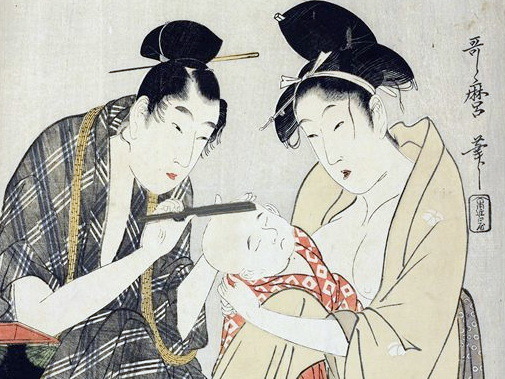
Shaving an infant's head.
Shichiya / O-Shichiya / お七夜 (Seventh Night)
Ceremony, takes place on the 7th day after birth
The child is named: samurai girls receive the name they'll use throughout their lives, including in adulthood, while samurai boys are usually given a childhood name (yomyo) they will use only until their coming-of-age ceremony.
Yomyo are sometimes reused in multiple generations of a household or clan. However, they start being less common during the last century of the Edo period. You can often recognize childhood names because they end in -chiyo or -maru.
The child has their head shaved: this is done for both boys and girls and is considered to help keep the head clean and prevent diseases. Families continue to shave their little ones' hair until they reach age 3, for both boys and girls.
A celebratory dinner follows, to which are invited the family's relatives, and (where applicable) the midwife, doctor, and wet nurse. Visitors give gifts of baby clothes and toys, and the family gives money and food to visitors, as well as to relatives who couldn't attend.
Registering the Child
No ceremony, no set age
The child's father must decide whether he will add the child's name to the family register. Although this is usually a given if the mother is his wife, he may choose not to register a child whose mother is his concubine or servant. Their children are only recognized as being his offspring - and, in the case of boys, potential heirs - if he officially acknowledges them.
Because there's no specific age at which registration must be completed, a father might wait to add boys born to concubines or servants to the register, or choose not to add them at all.
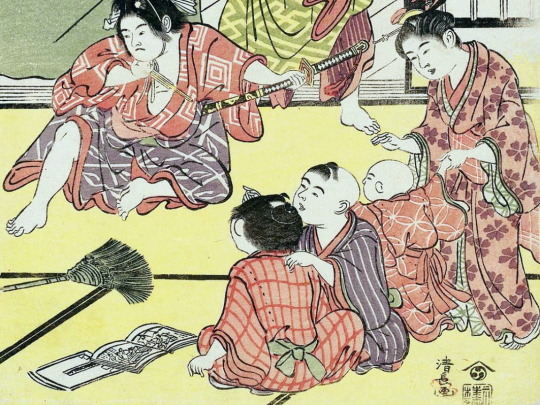
An assortment of children's hairstyles.
Kamioki-no-gi / 髪置の儀 (Ritual of Placing the Hair)
Ceremony, takes place at age 3
Following this ceremony, the child's hair is allowed to grow... in a manner of speaking, since boys' hair continues to be shaved at the crown, which will continue into adulthood.
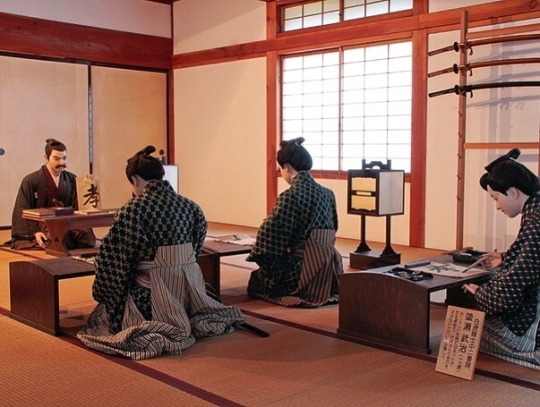
Classroom at Aizu's hanko, Nisshinkan.
Education
Beginning at age 6 or 7
Samurai boys start going to school outside the home around the time they begin wearing hakama and have their forelock tied back, around age 6 or 7.
Samurai boys attend han schools (hanko), of which there are some 200 across the country by the end of the Edo period. Hanko are established and funded by the domains to educate the children of daimyo and their retainers living in castle towns. Hanko are generally modeled after Shoheiko, the shogunate's academy.
Samurai boys outside of castle towns attend either gogaku, provincial schools, or shijuku, private schools whose classrooms may be located in someone's home or at a temple. (But not to be confused with terakoya, temple schools, which educated the children of commoners.)
The curriculum in samurai schools focuses chiefly on kangaku (Chinese learning), such as The Five Classics and The Four Books, but because there's no single official curriculum, can include anything from the basics of calligraphy and arithmetic to advanced subjects (for older students) that may include medicine and yogaku (Western learning).
Samurai boys often attended more than one type of school in their lives. Takasugi Shinsaku started his studies in the castle town of Hagi where he was raised, later joined Shoka Sonjuku, Yoshida Shoin's private school, and then attended Shoheiko.

A wakashu alongside an adult.
Genpuku / 元服
Ceremony, age varies
The most important part of a young samurai boy's genpuku, or coming-of-age ceremony, is shaving off his forelock to transition to an adult's hairstyle.
Other parts of the ceremony may include changing from the furisode (long-sleeved kimono) of an adolescent to the short-sleeved kimono of an adult, and wearing two swords in public, instead of only a single short sword as younger boys do.
However, whether these are part of a boy's genpuku depends on the part of the Edo period in which he lives, the boy's domain of origin, or even the social standing of the boy's family. For example, Tosa boys in the 1800s often wore two swords starting at a young age, and boys from low-ranking families often did not wear furisode due to the cost.
There's no set age at which a boy has his genpuku and is considered an adult, although it's most commonly held between the ages of 15 and 17.
In some instances, a boy's genpuku might take place at a younger age; for example, if his father dies and he has to take over as head of the family.
And in some instances, a boy's genpuku might be delayed well into his 20's; for example, if he's a daimyo's favorite page, a position in which he couldn't continue once he's considered an adult.
Genpuku is also when a boy receives his adult name. Well, names in the plural for most samurai boys of the Edo period.
The first of these is his kana, or common name, which is what people will call him. The second of these is his imina, his forbidden name or real name, which is used only by his lord, his parents, and after his death. It would be considered very rude for other people to call someone by their real name.

Actors portraying father and son in the Chushingura.
Being Able to Legally Adopt an Heir
At or after age 17
Even if a samurai boy had his coming-of-age ceremony before age 17, he cannot legally adopt an heir, should it become necessary for whatever reason, until he is at least 17 years old.
This may seem like a strange concern, but if his father died young and he has become the head of the family at a young age without younger brothers to take his place should something happen to him, it may be something he's concerned about, especially with frequent epidemics such as measles and cholera.
#history notes#historical notes#history research#historical research#history reference#historical reference#stages of childhood#edo period japan#samurai childhood#life stages#names
48 notes
·
View notes
Text
Hobbies
Wikipedia used to have this monstrous list of hobbies - that they have sadly replaced with something deeply subpar. Luckily, I captured it before they got rid of it. This is a much edited version with a few of my own thrown in. So, if you're bored, need an adventure, or are looking for some personal improvement or something ...
acroyoga, airplane spotting, antiquing, archery, art, baking, beachcombing, beekeeping, billiards, bird watching, birdwatching / bird-listening, boiled books, book reclamation or repurposing, bookbinding, brewing, building board games, button gathering, calligraphy, camping, candle making, candy making, canning, carpentry, caving, ceramics, cheese making, cleaning for the disabled and elderly, cleaning up the local park, climbing, clothes making, collecting postcards, conlang, creating comics, crochet, cross-stitch, cross fit, cycling, drawing, embroidery, ephemera gathering, etching, exploring, felting, fencing, film-making, flower pressing, fly tying, fossil hunting, found object art, fragrance-making, frisbee, furniture restoration, gardening, geocaching, glass-blowing, graffiti or street art spotting, guerrilla cultivating, hand lettering, hiking, information/word games, Jewellery making, journalling, junk journals, kayaking, kintsugi, knot tying, LARPing, learning a new language, leather-working, Lego, macrame, making bird feeders and bat boxes, making infused teas, making models, map-making, martial arts, math, Meals on Wheels delivery, memorabilia gathering, metalwork or blacksmithing, mineral gathering, miniature painting, model-making, mosaics, mudlarking, nature journalling, needlepoint, ocean glass gathering, orienteering, origami, painting, paper-crafting, paper marbling, photography, pickleball, playing instruments, pottery, printmaking, puzzles, quilling, quilting, racquet ball, rafting, rail fanning, ren fairs, research, road trips, robotics, rock-hounding, rock climbing, rock painting, rock tumbling, rug hooking, running, scrapbooking, scrounging, scuba, sculling or paddling, sculpting, sewing, short wave radio, signal games, singing, skating, snorkelling, soap making, songwriting, spelunking, spinning, stargazing, stone carving, string arts, sudoku, swapping postcards, swimming, tennis, thrifting, toy making, upcycling, urban exploration, verse, volunteering at the food bank, walking in the woods, weaving, welding, woodworking, world building, writing, yarn bombing, yoga.
2 notes
·
View notes
Text
Ateez's Full Storyline Explained - BONUS: Turbulence & The Real
Masterlist
Turbulence
As previously mentioned, I don't believe that this MV takes place within the storyline and the same goes for The Real which is covered below
Hinting toward this is also the "Wave (Overture)" track on the album which references back to the Wave MV, which was also on an album where neither MV forwarded the storyline
That being said, I'd still like to highlight the major themes of this MV
You can spot these within the lyrics and see them reflected in the MV: the contrast of drowning and flying
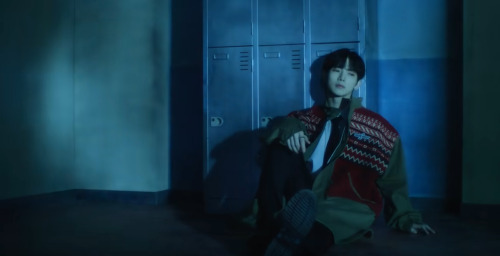

And the contrast of darkness/loneliness and light/comfort, belonging


Once again, we also see Wooyoung fly as he did in Eternal Sunshine - a sign of freedom

Conclusion: Since it's meant to be a comfort song for us, the fans, the emotional beats were what's important and they hit those beautifully in my opinion so it might simply be a choice to forgo the connection to the storyline and let this simply be what it is: a music video
The Real
Similarly to Don't Stop which seems to follow Universe's separate storyline for Ateez, The Real seems to be a self-contained MV
Regardless, I'm still gonna cover it here because it'd bug me otherwise

The MV seems to be inspired by obscure Korean cinema - the host of the YouTube channel Form of Therapy specifically pointed out similarities to Volcano High and I can see why - fun, wackiness, supernatural powers, an overpowered new student, and one object everyone wants to get their hands on
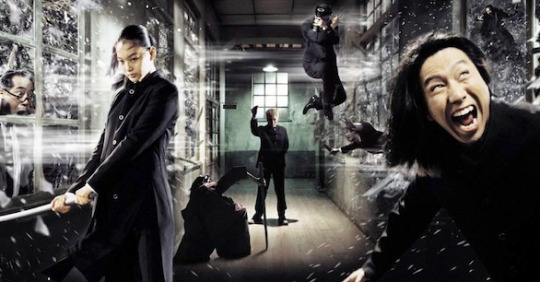
Since we know KQ likes to take inspiration from movies (see: Inception), this could very well be what brought us this masterpiece
This entire video is more in line with a high budget movie than an MV: wide shots, huge elaborate sets, multiple locations, fancy lighting and camera work, a large supporting cast of extras, CGI and even live white doves
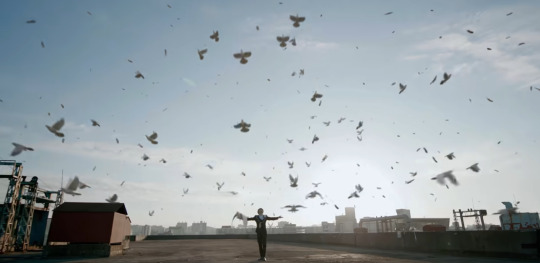
Mingi is the new student and the rest of Ateez are divided into different clubs: Hongjoong and Seonghwa in calligraphy, Wooyoung and San in baseball, Yunho and Jongho joined a biker gang and Yeosang is the symbol of peace who just wants everyone to get along
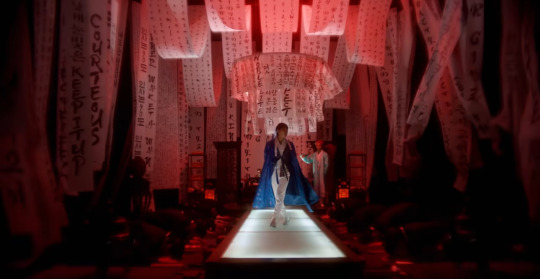
Each club is trying to recruit Mingi who sticks by his guns and doesn't join anyone while Yeosang peacefully observes from a distance
It all comes to a head at an epic showdown between all three clubs and Mingi where they all try to get their hands on the book Mingi has been holding onto since the beginning (presumably the source of his amplified power - a book of ethics likely familiar to most Korean students; see: „humble and kindness“)
They go full anime and even add a Marvel-esque sky laser beam for good measure

Ultimately, they realize they're stronger together and smile at their silly little fight which had actually caused the sudden formation of full-on stormclouds overhead (meterologists must hate them) but yay to friendship
This reconciliation makes Yeosang, the symbol of peace, very happy who steps forward like a runway model to kick off the celebration
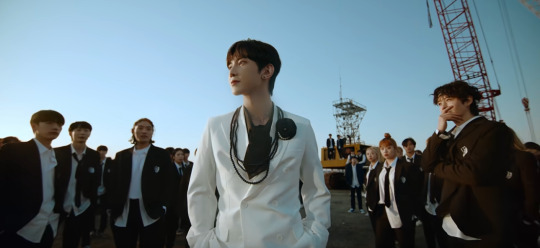
We get some fun bloopers during the credits and an adorable goodbye from Jongho which also marks the end of the Fever Era

Side-note: You can literally see the apple seeds mid-air; this man could kill us all with his bare hands.
#ateez#ateez lore#hongjoong#seonghwa#yunho#yeosang#san#mingi#wooyoung#jongho#the real#fever epilogue
50 notes
·
View notes
Text
Random Facts About Kristina. <3
Huehue-
Tags: @rheawritesforfun @digitl-art-monstr @thelaundrybitch @turtle-babe83 @post-apocalyptic-daydream @leosgirl82 @raphslovemuffin80 @raphielover @drowninghell @mysticboombox
_
- She has a photographic memory.
- Mother is a police woman. Father is a nurse.
- Her mother offered to help train her with firearms when she was younger, but she was afraid of them so she refused. She eventually does learn in her mid to late teens. She also carries around pepper spray and other self defense tools everywhere she goes. Originally, Kris had very little if any kind of combat abilities, generally relying on her intelligence to get her out of sticky/dangerous situations. However, not long after meeting the turtles, and going on numerous adventures with them, they convince her to learn ninjitsu and she becomes a highly competent fighter, displaying proficiency in martial arts and marksmanship.
- Kristina is an only child, raised by her parents Westly and Lorie who were originally from Denmark. They moved to New York after they got married. Her mother was in an accident and couldn't bear/conceive children, so they used her father's sperm and had a friend be their surrogate.
- Her birth mom, the friend, is a lovely Egyptian woman. She is basically an aunt to Kristina, and even after finding out she is her birth mother, Kris continues to see her as an aunt and nothing else.
- Growing up, Kristina was fascinated by ancient Greek and Egyptian mythology. She studied it in her free time, and wrote, read, and watched things about it. One of her dreams was to become a Egyptologist from a young age. She longed to travel the world, especially go to Egypt and Greece. A few of her biggest role models growing up were Evelyn O'Connell, Indiana Jones, and Lara Croft. She dreamed of being like them one day.
- At age 15, Kris was able to get a part time job at a book store. She worked there till she graduated High School and eventually quit to become a librarian when she was 18/19. She also goes to the New York University (also known as NYU) to study to become an Egyptologist or an Archaeologist. Eventually somewhere along the line she meets the Hamato brothers. And she couldn't be more happy to have them in her life.
- Kristina tends to be a optimistic person and tries to look on the bright side of things. She can be a bit skittish at times, but she's confident in some situations.
- She's relentless in her goals.
- She knows how to write and read ancient texts, and understand ancient tongues. As an adult, Kris retains her passion for knowledge and becomes more mature and less frightened.
- During her teen years, Kristina said that she had no time for romances, despite her later feelings for Raph, and when finally wedded to Raphael Hamato, she became inseparable from him.
- Kristina is incredibly hyperactive, cheerful, intelligent, bubbly, and optimistic. She's kind to everyone she meets, never threatening or harming anyone directly. Despite frequent scientific complications, Kris finds each failure as an opportunity to learn. She also admitted she had poor people skills and thought if she could help people, they would like her.
- She remembers the most random things. And likes to spew little weird facts at people.
- She's obsessed with books. She takes them with her everywhere. Literally everywhere. She always has at least one book on her person at all times. If you can't find her reading, she'll most likely be writing/drawing, practicing calligraphy or researching random facts.
- She tried to teach herself the hula dance from Lilo & Stitch when she was little, this resulted in her taking hula classes. Something she stopped during high school because, and I quote, "I just don't have the time". Though she does love to hula, and is pretty good at it.
- Kris has always been very serious about her grades. She's very smart, a classic nerd. She worked so hard, she never really made friends in school. She was always studying or doing some form of school work. She was constantly invited to things, but after a while of her constantly declining hanging out, people just stopped bothering to ask at all. This made her a bit of a loner in high school. But she had her books and she was mainly content.
- This is one of the main reasons why she cherishes the turtles friendship so much. Because she never really had any real friends before. It's a foreign feeling/experience but she loves it. And she does her best to be a good friend in return, despite her poor people skills.
- "For science!" a classic catchphrase of hers. Kristina will get herself in trouble/mischief sometimes and when lectured by a friend/family member she'll almost always respond with; "I had to do it, for science!" (or something of the sort)
- Curiosity may just be the end of her. (Raph definitely hovers and feels like he has to keep a close eye on her, lest she go off and do something dumb in the name of curiosity/science).
- She's obsessed with Donnie's lab. She thinks it's very cool and could spend hours in there if they let her. Kris and Donnie definitely go into little tangents, they could talk for hours about science and similar topics.
- Kris and Mikey are doodle buddies. I can honestly see them hanging out for hours just drawing with each other. They'd share little tips and tricks and show each other their art work. It'd be really cute and wholesome.
- She likes to read/draw/write/study while Raph works out. If you can't find her with Donnie, you'll most likely find her with Raphael. Sometimes she'll join him, but she'd rather sit on his shell while he's doing push ups, or lay underneath him, or off to the side somewhere and watch him work. She finds it very attractive, and she likes to watch him train. She thinks it/he's cool lol.
- (mainly for RiseLeo) Kris does not understand his jokes/puns a good majority of the time. Humor isn't really her thing, and sometimes she'll just sit there like; O.O. "I'm sorry, I didn't quite get that. Do you think you could explain the joke to me?" Leo probably either A) tries even harder to make her laugh/react. Or B) eventually just gives up entirely and tries to avoid telling her jokes. "Why do I even try with you?" (LMAO) I can totally see Leo telling a joke and Kris not understanding it, and immediately following up with the most bizarre fact and then Leo's the one who's confused/disturbed.
Leo: *pulls off some kind of cringey dad joke*
Kristina: "Did you know that a ducks penis is like a corkscrew?" (she'd also say this completely straight faced-)
Leo: O.O "Why- How do you even know this?"
(Either that or he'd be intrigued and want to know more of her weird ass facts.)
- IMAGINE: she's on a date with Raphael and all of a sudden just blurts out the most random/weird thing- he ends up choking on his food and she's patting his back all innocent- maybe even continuing on with her lil story.
Idk- I have more but imma leave it on that note so this isn't too long hehe.
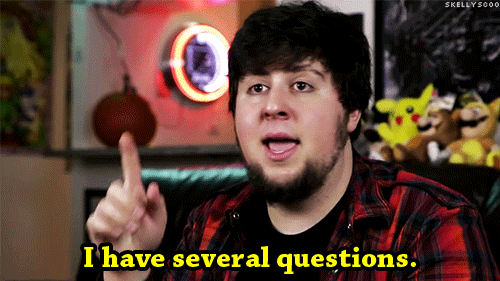
^^ her friends/family every time Kris opens her mouth to tell them the latest fact she's learned. ^^
#tmnt#tmnt oc#rottmnt#rottmnt oc#raphael hamato#tmnt raph#tmnt raphael#tmnt leo#tmnt leonardo#tmnt mikey#tmnt michelangelo#tmnt donnie#tmnt donatello#random oc facts#random oc stuff#random facts#teenage mutant ninja turtles#oc#oc facts#original character#fluffytriceratops
62 notes
·
View notes
Text
Tenipuri Complete Character Profile - Bunta Marui

[PROFILE]

Birthday: April 20th (Aries)
Blood Type: B
Relatives: Father, Mother, Two Younger Brothers
Father’s Occupation: Company Employee (manufacturer)
Elementary School: Kanagawa Third Elementary School
Middle School: Rikkai University Junior High School
Grade & Class: Third Year | Class 3-B | Seat 16
Club: Tennis Club - Regular
Committee: None
Strong Subjects: Japanese, Music
Weak Subjects: Science, Math
Frequently Visited Spot at School: Home Economics Room
World Cup Team: U-17 World Cup Japanese Representatives
Favorite Motto: “Eat, sleep, play.”
Daily Routines: Playing with his brothers

Hobbies: Going to hotel buffets, rap battling [23.5]
Favorite Color: Red
Favorite Music: ORANGE RANGE
Favorite Movie: Pirates of the Caribbean
Favorite Book: Manga, trending novels ➜ Manga (he reads it off of his phone) [23.5]
Favorite Food: “I like anything!” (his favorite meat is short ribs marinated in tare sauce [23.5])

Favorite Anniversary: February 14th, April 20th
Preferred Type: A person who will give him things (mostly food) ➜ A girl who will give him Valentine’s Day chocolate [23.5]
Ideal Date Spot: An amusement park ➜ An ice-skating rink [23.5]
His Gift for a Special Person: “A cake I made, of course!!”
Where He Wants to Travel: “USJ!!”
Thing He Wants Most Right Now: A cotton candy machine ➜ Sweets from around the world [23.5]
Dislikes: Manual labour, having to draw [23.5]
Skills Outside of Tennis: Baking cakes, bowling
Spends Allowance On: Mostly sweets
Routine During the World Cup: Contacting his brothers, searching for good food from other countries
[DATA]
Height: 164cm
Weight: 53kg
Shoe Size: 26cm
Dominant Arm: Right
Vision: 2.0 Left & Right
Play Style: Serve & Volleyer
Signature Moves: Tightrope Walking, Iron Pole Strike, Temporal Difference Hell, Wonder Castle
Time He Wakes Up: 5:50am
Time He Goes to Sleep: 11:00pm
Blood Sugar Level: 116 mg/dL
Favorite Brands:
Racquet: WILSON Triad 3 115
Shoes: WILSON CROSS FIRE DST 02 (S1121X)
Overall Rating: Speed: 4 / Power: 2 / Stamina: 3 / Mental: 3 / Technique: 5 / Total: 17
Kurobe Memo: “He exhibits a unique play style that is hard to imagine. Not only does he use a wide range of techniques, but he also dedicated to his position. I recommend cutting down on sweets to work on conditioning his body.” [RB]
[POSSESSIONS]
What’s in His Bag:
Sweets
A candy toy // He plans on giving it to his brothers when he gets home
Bottled tea
A plastic model that’s still being built // His brothers are excited to see it finished
“The Restaurant of Many Orders” by Kenji Miyazawa // He bought it because of the title, but now he’s a bit disappointed
Sanada’s calligraphy: “Content with what you have.”
What’s in His Locker [C&S]:
Sweets // A large amount are in it, but otherwise his locker is tidy. He intends to eat them all in one day
A wristband Jirou forced him to take
A (signed) photo of him and Kimijima
5 notes
·
View notes
Photo




The Arts and Crafts Art of the Book
As the Nineteenth Century progressed, the legacy of the Industrial Revolution brought massive changes to the way goods were produced, and many people began to feel these changes were not all for the best. Mechanization allowed vast qualities of goods to be produced, but many felt it alienated workers and produced inferior goods. The Arts and Crafts Movement was one of many artistic and social reform movements of this time. Its adherents believed that happy workers made beautiful things, and making beautiful things made happy workers. They looked to the medieval workshop method of production, in which the craftsman-designer over saw the production of objects from start to finish, as the ideal model of production.
Given the Arts and Crafts Movement's focus on reviving medieval forms and methods of craftsmanship, the art of the book was a natural area of interest, with artists turning to the medieval tradition of illuminated manuscripts for their inspiration.
The most famous Arts and Crafts book artist and publisher, as with most things Arts and Crafts, is William Morris. William Morris was fascinated by medieval manuscripts, such as the ones he saw at Canterbury Cathedral as a young man and the Bodleian Library while a student at Oxford. Morris began experimenting with calligraphy in the 1870s, teaching himself a number of scripts, and learning about the technical aspects of manuscripts, such as margin size and letter spacing. These experiments gave Morris an in depth understanding of the scribal arts, allowing him to do more that simply copy existing styles and texts. During this time, Morris also began to develop a sense of decoration as it related to the text, and with his friend and fellow artist Edward Brune-Jones, produced several manuscripts.
The next step for Morris would be to move from manuscripts to printed books. Morris already had some experience in the printing business, having worked as the editor for the Oxford and Cambridge Magazine as a student in the 1850s. However, he did not begin to seriously think about starting a publishing company until the 1880s. One major problem for Morris was that, in keeping with the Arts and Crafts ideal of the fully integrated craftsman-designer, Morris wanted to design his own type. However, he lacked the specialized skills needed to cut the steel punches used for the first step in that process. This problem was solve in 1888 when Morris realized he could use a new projection and photoengraving technology to design the type at full size, which could then be shrunk down for specialized craftsmen to produce the punches. With this problem solved, Morris was able to set up the Kelmscott Press in 1891, publishing 66 titles in the five years before his death in 1896.
As with many other aspects of the Arts and Crafts Movement, William Morris' Kelmscott Press and its Art of the Book proved very popular in America, particularly the idea of the craftsman-designer producing a “whole book” intended to be a thing of beauty from cover to cover, instead of simply a cheap, mass produced object. Thus, a number of Arts and Crafts presses were founded in America, particularly in the Midwest, with Chicago acting as a major center for Arts and Crafts books. Notable presses included Clerks's Press in Fremont, Ohio, Cranbook Press in Detroit, and Village Press in Park Ridge Illinois. Notable publishers included Herbert Stone &Co., Stone and Kimball, and Way and Williams.
One of the best known examples of American Arts and Crafts books is Auvergne Press' The House Beautiful, which included photographic studies of dried weeds and highly stylized pen and ink designs of flower patterns drawn by Frank Lloyd Wright. The text itself was a reprint of a sermon by William C. Gannett, a famous Unitarian clergyman and social reformer. Gannett was also a friend of Frank Lloyd Wright's uncle and fellow Unitarian minster, Jenkin Lloyd Jones. Although the sermon itself is not particularly inspired, the chance to work in a new medium, and the message itself seemed to have appealed to Wright.
Image 1: Leaf from an Antiphoner from the Franciscan Convent of St. Klara, Cologne, ca. 1350, manuscript cutting. Photo Credit: The V&A Museum.Book makers of the Arts and Crafts Movement were inspired by the medieval manuscripts such as this one. They saw these manuscripts as beautiful works of art made by craftsman-designers who combined technical and design skills to create entire works of art, which were far superior to mass produced books. An antiphoner contains the choral parts sung during Mass by a monastic or other religious community. They were typically written in a large format so the whole choir could read them at the same time.
Image 2: William Morris, Maud, 1893, drawing. Photo Credit: The V&A Museum.William Morris was one of the leading artist and designers of the Arts and Crafts Movement. In 1891 he set up Kelmscott Press. As with other ventures, Morris designed and produced the books as a whole work of art, designing typefaces, page layouts, illustrations, bindings, and covers for each work as a whole.
Image 3: William C Gannet and Frank Lloyd Wright, The House Beautiful, Auvergne Press, 1896-1898. Photo Credit:Princeton University.Frank Lloyd Wright produced a series of photographs and ink drawing designs for Auvergne Press's The House Beautiful, a reprinting of a sermon by Unitarian minister William C. Gannet.
Image 4: Frank Lloyd Wright, Collotype of Weeds for The House Beautiful, Auvergne Press, 1896-1898. Photo Credit: Princeton University.Frank Lloyd Wright produced these collotypes of roadside weeds for Auvergne Press's The House Beautiful. Collotype is an early form of photographic printing, in which plates covered with a light sensitive gelatin is exposed to photographic transparencies.
#art history#Arts and Crafts#arts and crafts movement#william morris#frank lloyd wright#book#bookbinding#book art
6 notes
·
View notes